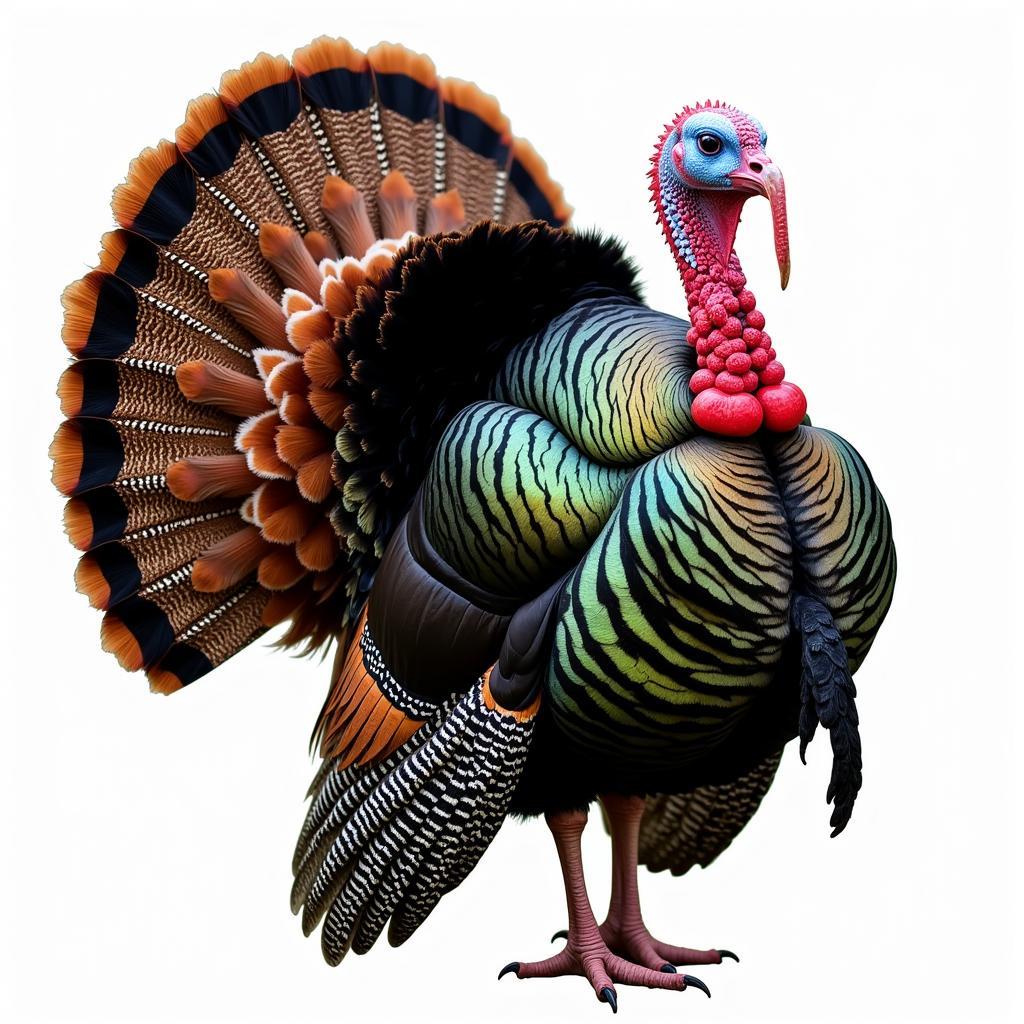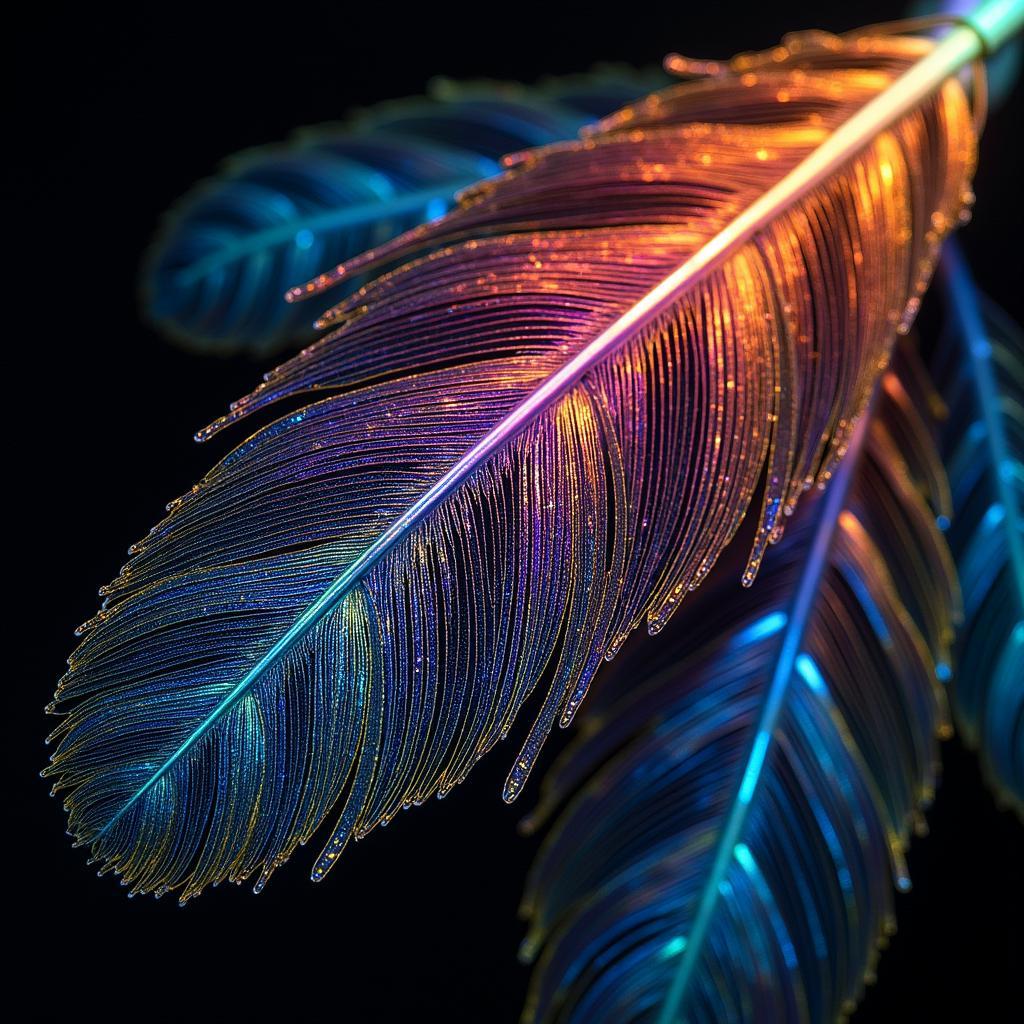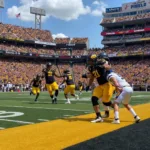Do turkeys have colorful feathers? While we often associate turkeys with the muted browns and blacks of the common wild turkey, the answer is more nuanced than a simple yes or no. The world of turkey plumage is surprisingly diverse and full of iridescent beauty, ranging from shimmering greens and bronzes to vibrant blues and reds, depending on the species, sex, and even the individual bird.
Exploring the Spectrum of Turkey Feathers
Wild turkeys, the most common variety in North America, are generally known for their dark, almost drab plumage. Male wild turkeys, also known as toms or gobblers, display a rich palette of iridescent feathers, predominantly brown, black, and bronze, accented with shimmering greens and blues. These iridescent feathers play a crucial role in courtship displays, catching the sunlight and creating a mesmerizing spectacle to attract potential mates. Female wild turkeys, or hens, are more subtly colored, with their feathers primarily composed of mottled browns and grays, providing excellent camouflage while nesting and caring for their young.
Why Are Male Turkeys So Colorful?
The vibrant coloration of male turkeys is primarily driven by sexual selection. The more vibrant and impressive the display, the more likely a male is to attract a female. This has led to the evolution of elaborate plumage and courtship rituals, where the males strut and fan their tail feathers, showing off their iridescent hues to the fullest. These displays are not just about color; they’re also about the size and symmetry of the tail fan, indicating the health and genetic fitness of the male.
 Male Turkey Displaying Colorful Feathers
Male Turkey Displaying Colorful Feathers
Beyond the Wild Turkey: A Rainbow of Colors
While the wild turkey is the most familiar, there are other turkey species with even more striking coloration. The Ocellated turkey, native to the Yucatan Peninsula, boasts a stunning array of iridescent greens, blues, and bronzes, with eye-like spots, or ocelli, on its tail feathers, giving it its name. The colors are so vibrant they almost seem to glow. These vibrant colors serve a similar purpose as in wild turkeys, attracting mates and establishing dominance.
What About Domestic Turkeys?
Domestic turkeys, bred for meat production, often exhibit variations in feather color, including white, black, bronze, and even shades of red and buff. These color variations often result from selective breeding, focusing on traits other than camouflage or courtship display.
The Role of Pigmentation and Structure in Turkey Feather Color
The colors we see in turkey feathers are produced by a combination of pigments and structural features. Melanin pigments create the browns and blacks, while carotenoids, obtained through their diet, can contribute to reds and yellows. The iridescent greens, blues, and bronzes are not produced by pigments, but rather by microscopic structures within the feathers that refract light, creating shimmering effects as the viewing angle changes. This structural coloration is what makes turkey feathers appear to shift and shimmer in the sunlight.
 Microscopic Structure of Turkey Feathers
Microscopic Structure of Turkey Feathers
Do Turkey Feathers Change Color?
While the basic feather patterns remain constant, the appearance of turkey feathers can change throughout the year due to molting and wear. New feathers grown after molting are often more vibrant, while older feathers can become faded or damaged. Additionally, the angle of light and the turkey’s posture can dramatically alter how the iridescent colors appear, creating a dynamic display.
Conclusion: A Colorful World of Turkeys
So, do turkeys have colorful feathers? The answer is a resounding yes, though the degree of color varies significantly between species, sex, and individual birds. While we often associate turkeys with the muted browns of the common wild turkey hen, the males possess a surprisingly vibrant and iridescent plumage, used in elaborate courtship displays. Beyond the wild turkey, other species like the Ocellated turkey showcase even more dramatic coloration. From the shimmering greens and blues of the wild turkey to the vibrant hues of other species, turkey feathers reveal a fascinating world of color and adaptation.
FAQ
- What is the purpose of the colorful feathers on male turkeys? Primarily for attracting mates and displaying dominance.
- Are female turkeys colorful? Generally, they are more camouflaged with mottled browns and grays.
- What is the most colorful turkey species? The Ocellated turkey is known for its vibrant plumage.
- How do turkey feathers create iridescent colors? Through microscopic structures that refract light.
- Do turkey feathers change color throughout the year? Their appearance can change due to molting and wear.
- What colors can turkeys not see? This is still being researched, but likely similar to other birds.
- What color are turkey feathers? Depends on the species and sex, ranging from browns and blacks to vibrant blues and greens.
Common Scenarios & Questions
-
Scenario: A child asks why a male turkey at the zoo is so colorful.
- Answer: The bright colors help the male turkey attract a mate, just like a peacock uses its beautiful tail!
-
Question: Why are some domestic turkeys white?
- Answer: White feathers are preferred in commercial turkey production as they leave no dark pin feathers after plucking.
Further Exploration
You can learn more about what colors turkeys can and cannot see by checking out our articles on what colors can turkeys not see and what color are turkey feathers.
Call to Action
For any assistance, please contact us at Phone Number: 0373298888, Email: SEO.backlink@gmail.com or visit our office at 86 Cau Giay, Hanoi. We have a 24/7 customer support team.

